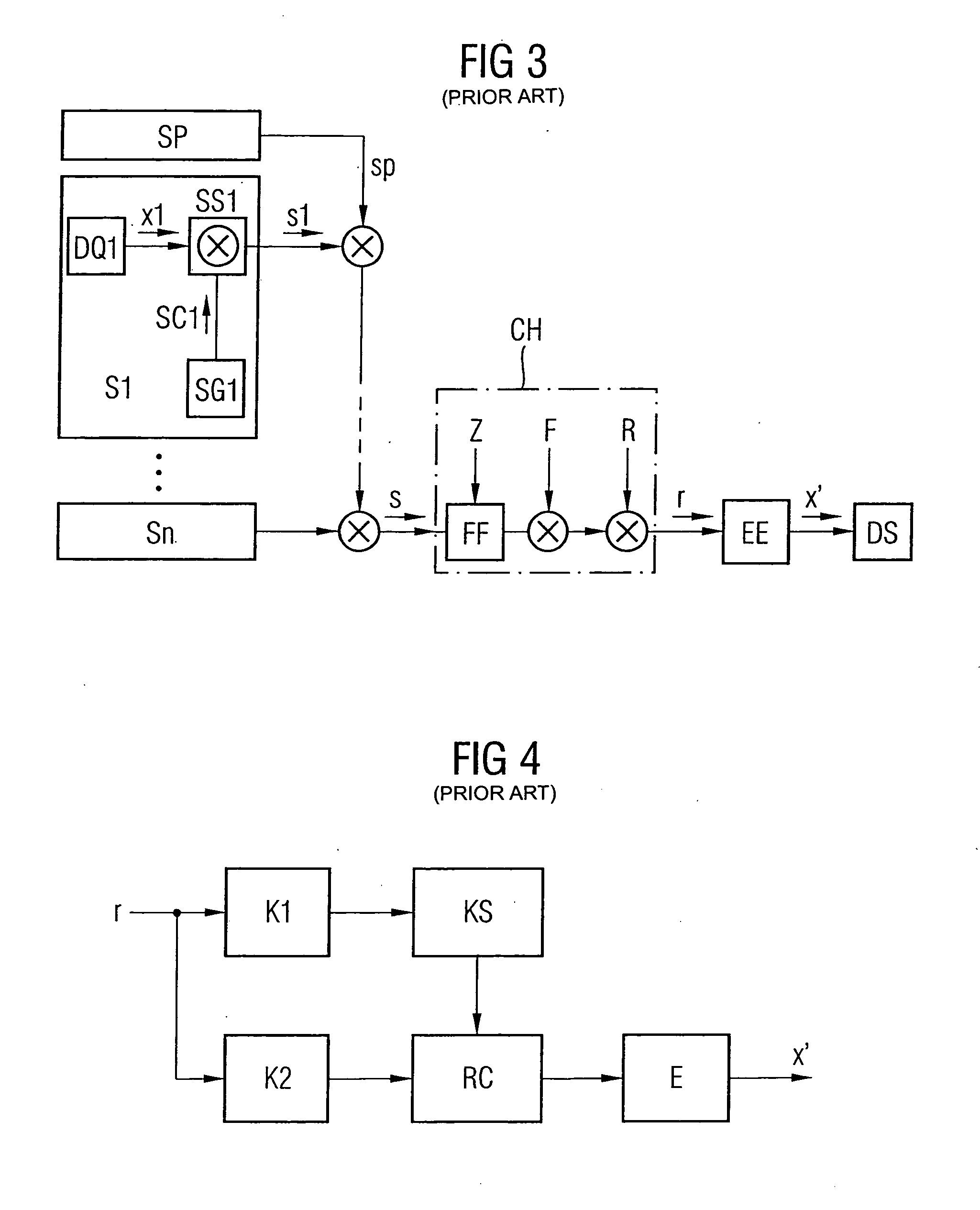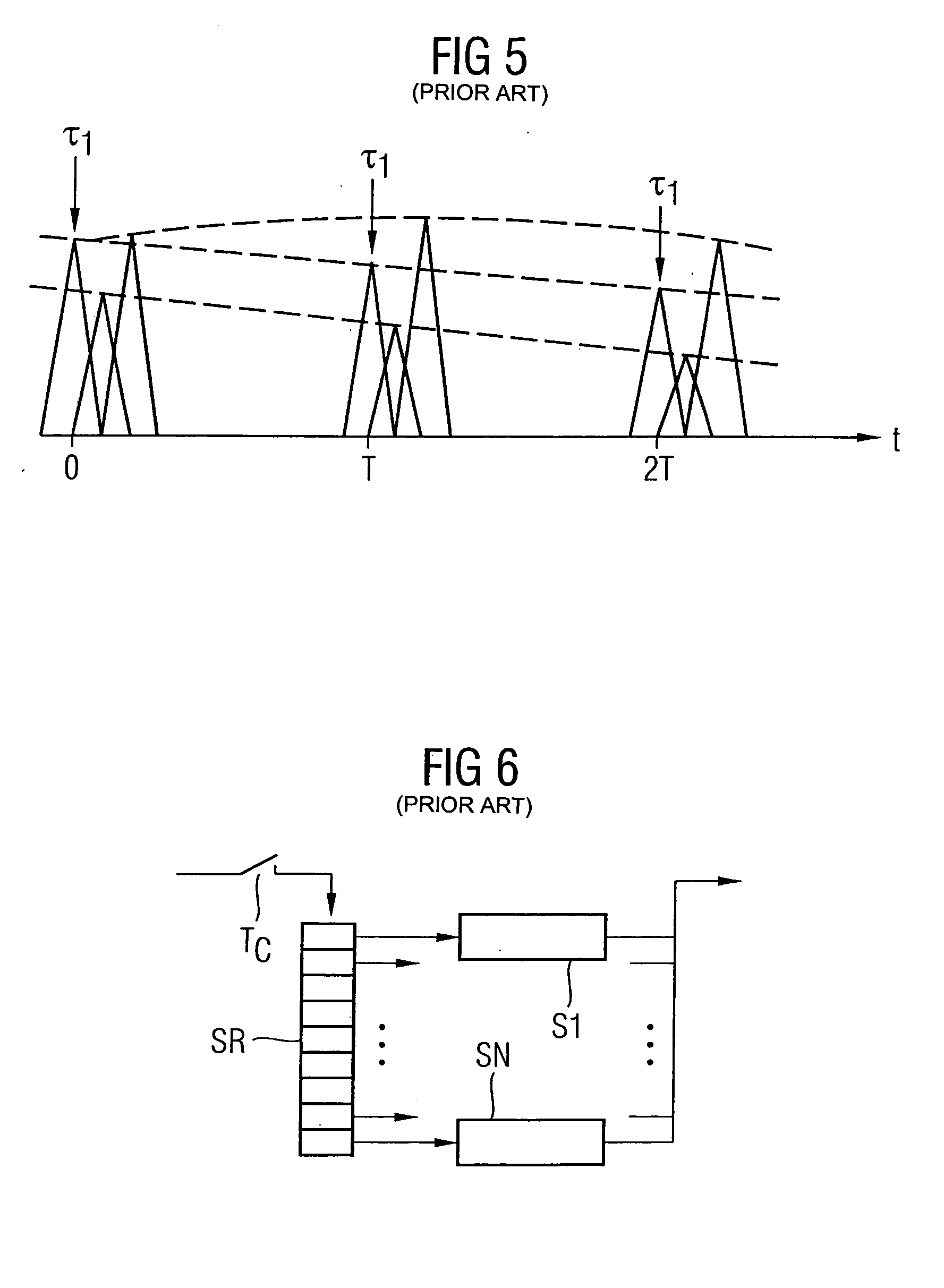Method for prediction of a channel coefficient
a channel coefficient and channel estimation technology, applied in the field of channel estimation in mobile radio systems, can solve the problems of not knowing the doppler frequency in advance, affecting the accuracy of prediction, and reducing the amount of data used for estimation purposes in the canonical random variable analysis (cva), so as to achieve stable and reliable calculation, predict more accurately, and reduce the effect of uncertainty
- Summary
- Abstract
- Description
- Claims
- Application Information
AI Technical Summary
Benefits of technology
Problems solved by technology
Method used
Image
Examples
Embodiment Construction
[0054] The preconditions for the applicability of canonical random variable analysis (CVA), and its principles, will be explained first of all in the following text. One precondition for the applicability of canonical random variable analysis (CVA) is the presence of a Markov process in which a state in the future depends on a limited number or finite number of states in the past and can be predicted from them. The behaviour of a mobile radio channel corresponds to a Markov process such as this. A linear, time-invariant, strict, time-discrete Markov process without a defined input signal is assumed. This stochastic process x is observed, for example sampled, at identical times k in order to produce a time series, which is given by:
Xk, k=1, 2, . . . , N Equation 6
[0055] For this purpose, a past vector p is defined, with m components and with a dimension m.
p=(xN+1−m, . . . , xN−1, xN)T Equation 7
[0056] The past vector p represents a total of m successive times k of Xk, and for...
PUM
 Login to View More
Login to View More Abstract
Description
Claims
Application Information
 Login to View More
Login to View More - R&D
- Intellectual Property
- Life Sciences
- Materials
- Tech Scout
- Unparalleled Data Quality
- Higher Quality Content
- 60% Fewer Hallucinations
Browse by: Latest US Patents, China's latest patents, Technical Efficacy Thesaurus, Application Domain, Technology Topic, Popular Technical Reports.
© 2025 PatSnap. All rights reserved.Legal|Privacy policy|Modern Slavery Act Transparency Statement|Sitemap|About US| Contact US: help@patsnap.com



